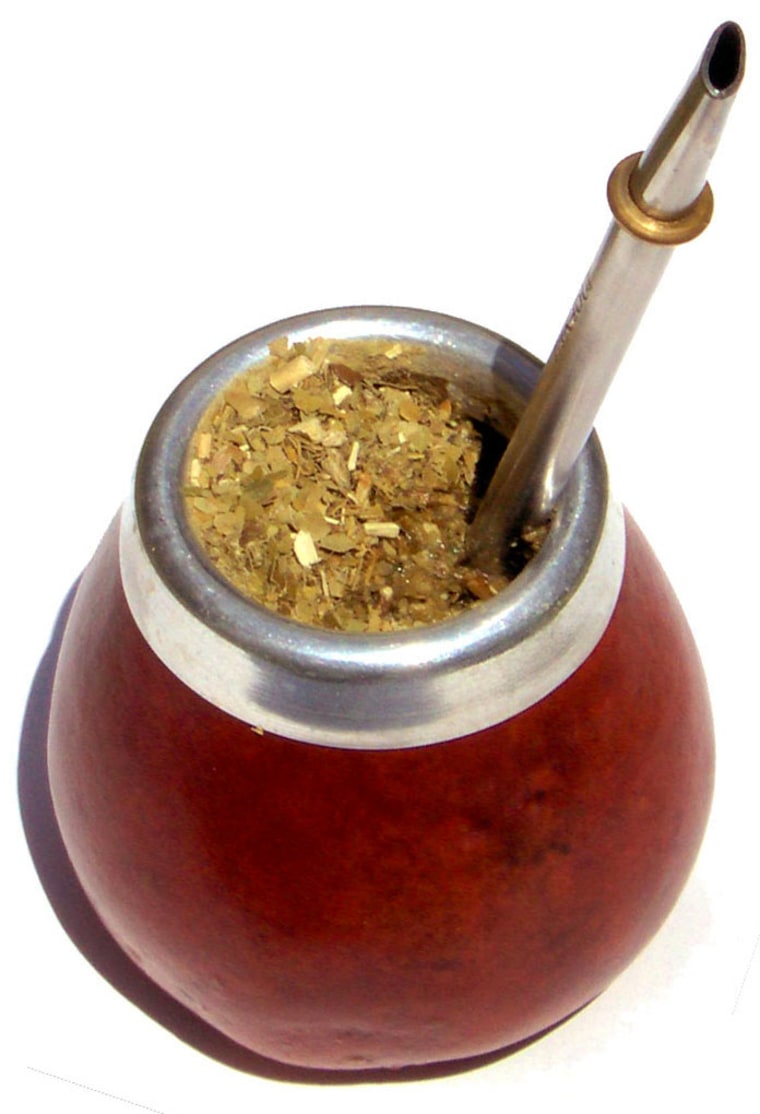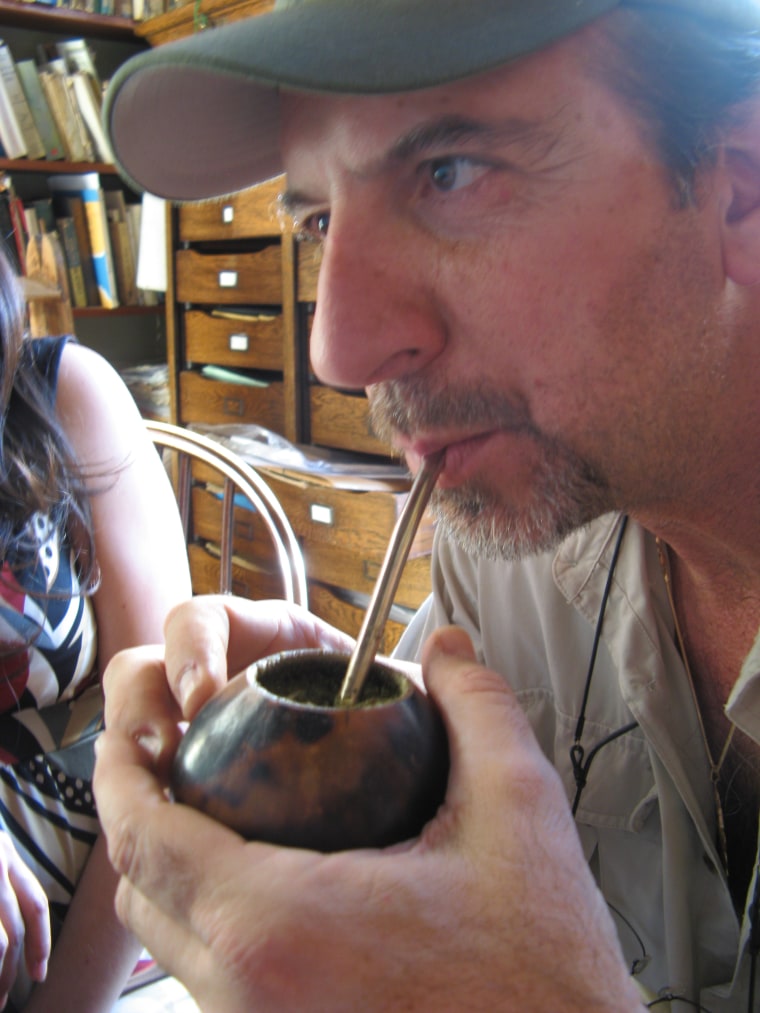The residents of this country deny it, but to an outsider it sure looks like they’re obsessed — or addicted — to mate.
Mate (pronounce ma-tay) is like an herb tea, and everywhere — from the shade of a tree in the park to sitting rooms to the back seats of cars — friends slow down and share mate. This is as much a social experience as it is a way to quench a thirst. Oh, and there are rules. (Aren’t there always rules! More on that later.)
First a warning to the germ-phobic: Mate is shared from the same cup, using the same straw, person to person. Why? Sharing mate with a buddy or a stranger is all about friendships.
Mate etiquette
When drinking mate, first a gourd is packed close to the brim with the dried leaves. Artfully

placed in the green leaves and twigs is a silver straw known as a bombilla. The brewer adds near-to-boiling water and a few moments later, you take a slow, steady sip from the silver straw.
Once it’s empty, the brewer takes the gourd, and fills it back up to either drink himself or to share with someone else at the gathering.
One rule: Never say “thank you.” That is a huge insult. As Macarena Preeyra Olazabal, a mate expert, explains. “It suggests you don’t want to drink more and don’t really want to extend the friendship.”
Oh, and one more thing -- I was scolded by brewer Soledad Olagregui: “Never stir the straw!” It’s an insult to the brewer, suggesting it was not prepared correctly.
Where does mate come from?
Mate is not a tea; it grows on a bush. Head to the grocery store and, like coffee in the U.S., there is one long aisle of choices.
Mate was first brewed by the Guaranies Indians. They learned long ago that it was a great “pick-me-up,” and that when they were hungry, it satisfied hunger. Studies suggest it does not have caffeine, but rather what Argentineans called “matine.”
When the Spanish first came to Argentina in the 1500s, Jesuit priests studied its use and not only found it was indeed a stimulant, but also a superb way to keep people from drinking alcohol. The priests promoted its use and it’s been a staple here since.
It’s not uncommon to meet people today who swear by it, claiming it helps the digestive system and magically helps keep off weight.

The traditional mate is consumed without sugar, but increasingly the younger generation adds sugar, honey, sometimes even zest from an orange or lemon. I broke tradition and tried it with sugar. Were I to take up this habit, which is unlikely, I’d probably tend towards the sweeter side.
Want to give it a try? While mate was once only available in Argentina, Uruguay, Brazil and Paraguay, today it’s wildly available in the United States. Finding the gourd and “bombilla” straw may take a little more work, but it’s critical to take in the entire experience. Do not brew a cup as if you were drinking tea. You will not be happy.